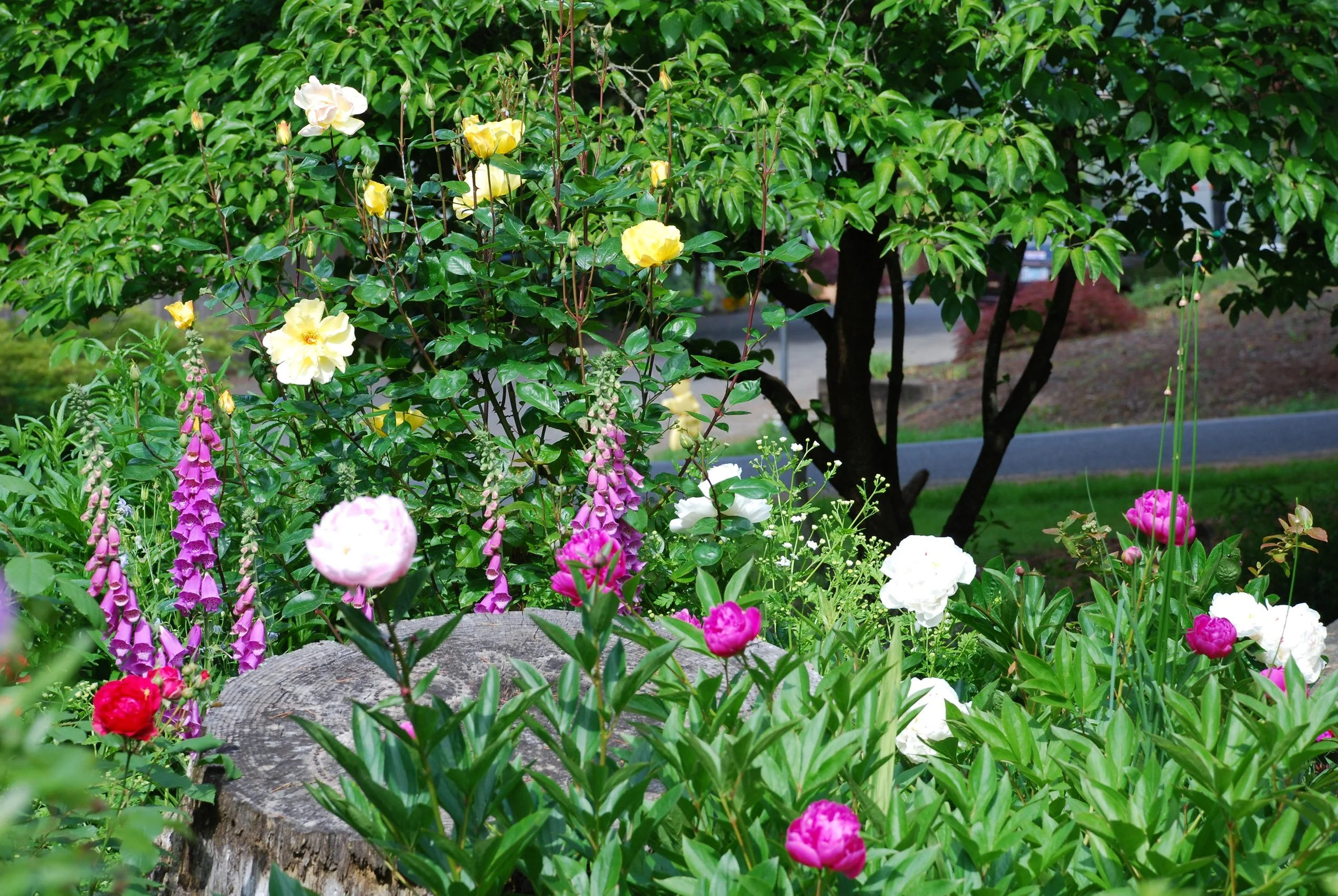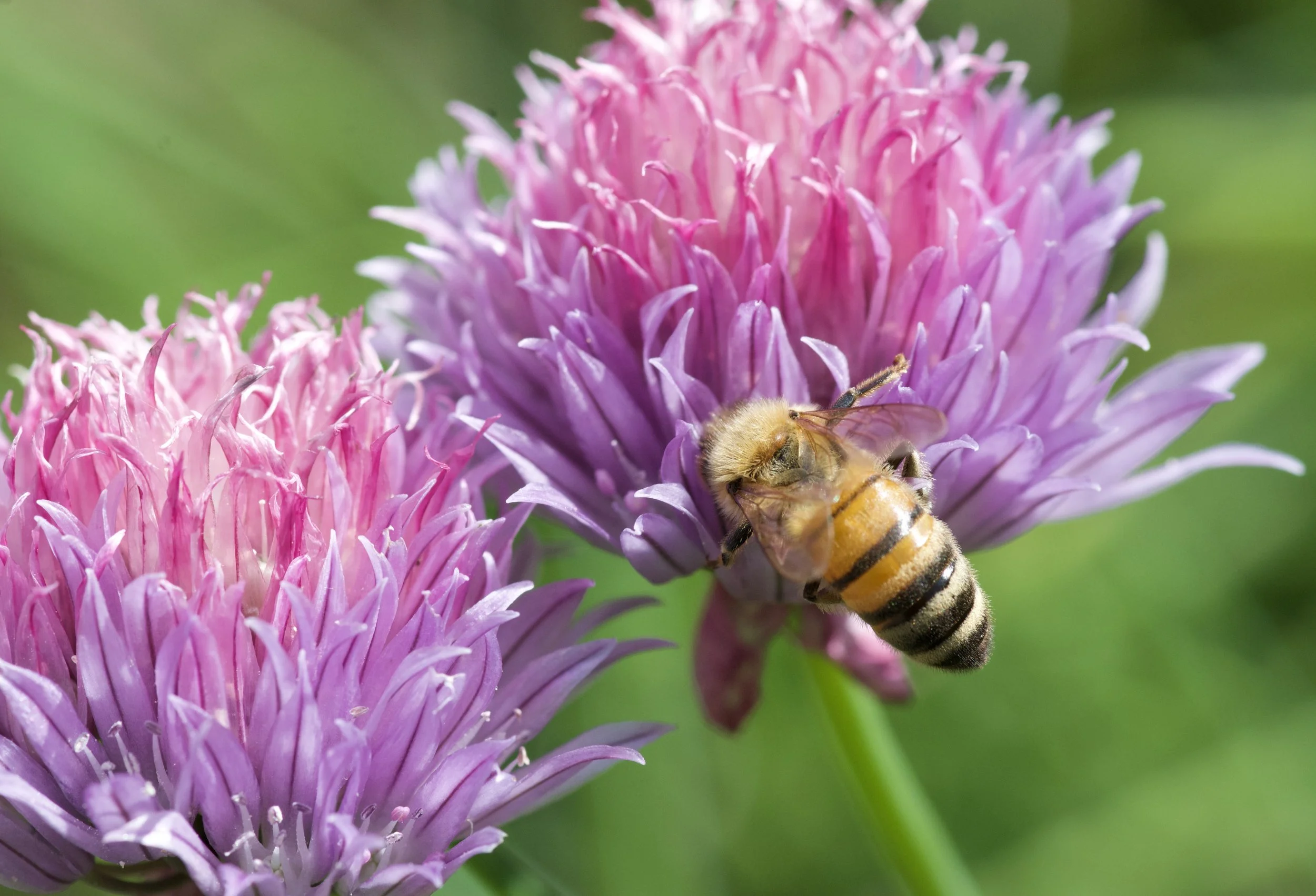What is an ecological gardener?
Over my 30+ years of gardening, I was also working and didn’t have a lot of extra time to spend doing garden chores. So even though my husband and I cared for our gardens ourselves, we didn’t always do the “maintenance” that is often required, such a fall clean up, and the “scrubbing out” of leaf litter, and the myriad of activities we think a garden needs. We never owned a blower, and there WAS a lot of raking to be done in Portland, where we lived in the same house for 15 years, as next door to our backyard stood a gorgeous old oak tree which scattered all the leaves in our yard. I did not mind one bit and I mostly appreciated the shade it gave us and the beauty it provided year round. I did push the leaves mostly into the beds and around the edges of the garden, because it was easy….
The backyard and oak tree next to our fence, from our bedroom window
Because of our “lack of care”, I started to notice that plants moved around a lot. The foxglove (digitalis) went from the front yard to the side yard and then a couple of years later, they were all the way in the back. That was incredible!
I also started noticing how plants that I had planted took over, some disappeared altogether, and how plants for the most part, thrived without a lot of care, with the exception of watering when needed, and weeding.
Our veggie garden did get a lot of hands-on time, as we ate most of our own vegetables over the years, and that in itself showed me how the kale kept coming back and didn’t mind frost, and the arugula flattened itself out in the cold winter days and literally crawled on the soil, but bounced back to tall in warm summer days. Amazing!
I loved seeing how different growing conditions offered plants so many options.
More colors in the fall
Over the years, I realized that the way I was relating to the garden helped plants grow where they most preferred. Many plants love rocks and crevices where they can get protections from the elements, and their roots are naturally mulched; the plants who love shade chose the more shady backyard (yes, the anemone took over), and the leaves I left on the perennial beds in the fall protected the plants through the winter.
I was aware of the growing concerns surrounding the environment, particularly the disappearance of vital insects, bugs, and pollinators. But not until I started to garden professionally did I notice of how many people want perfect gardens with no bugs, no one eating the leaves and no critters munching on the flowers. On one hand, I completely understand that, and on the other, I realized, like many others, that our gardens now more than ever must be places that invite those very crucial and incredibly important “bugs” to move into our spaces, so we can create more biodiversity and prioritize wildlife for the benefit of all… not just for our own human benefit.
My focus has become to educate as many people as possible and use our garden and our clients’, if they are amenable, as spaces where we take time to incorporate plant selection and habitat design for a wide range of pollinators, needed for the ecosystem to be resilient and find its balance. This is essential to maintain sustainability in the long term. More species allow the plants, the insects and the pollinators to thrive.
We like to let plants determine the design by introducing ecological processes that allow these very plants to evolve and change. Trying to maintain a garden the same way year after year is a struggle. Most of the gardener’s time is taken up by removing plants, to keep them from growing!
If allowed, plants in any area evolve and grow, die and new plants appear in their place in a process called ecological succession.
I love to spend time observing the details of each garden, as that allows us to work specifically with each space we create and adapt to the shifts that happen season to season and year to year. Our time in the garden is less laborious and so much more interesting!
Native (to eastern WA) balsam root after flowering. Still gorgeous!
“…if I base my design choices on an understanding of natural systems and let nature determine the details, my gardens become sustainable in a way a conventional garden can never be.”
Larry Weaner, Garden Revolution



